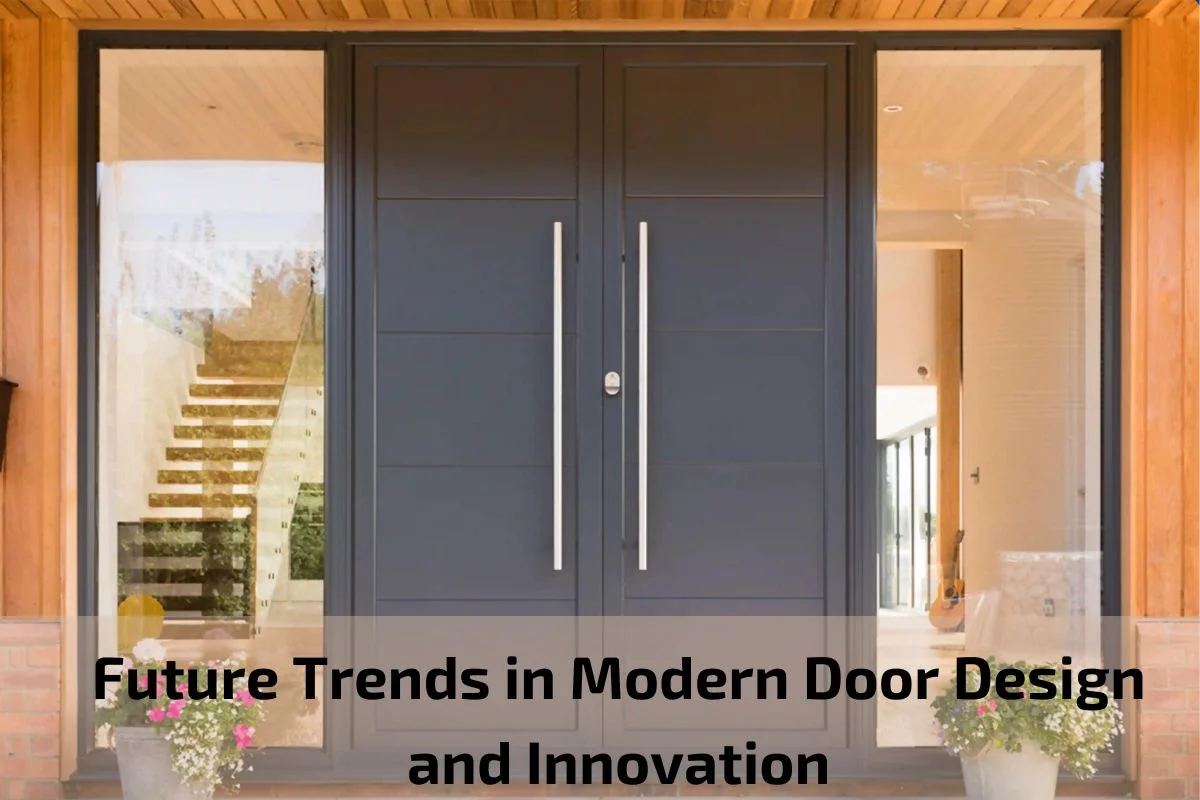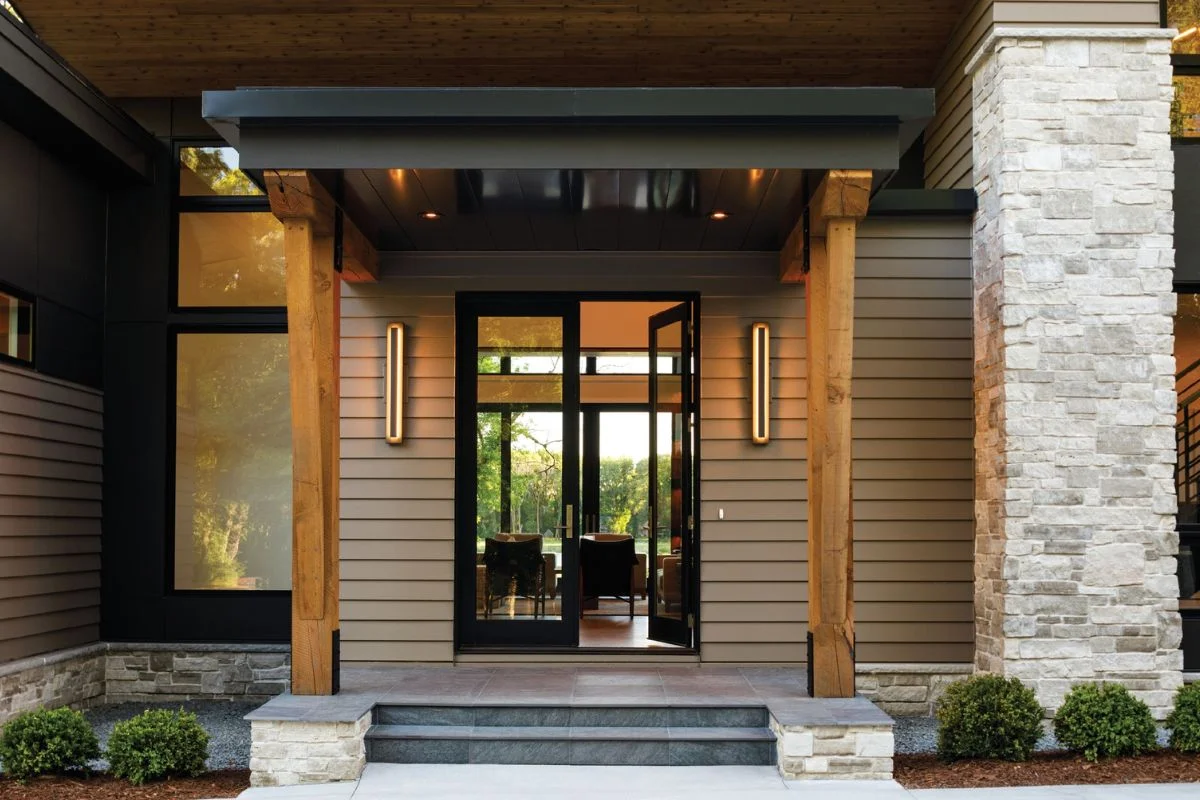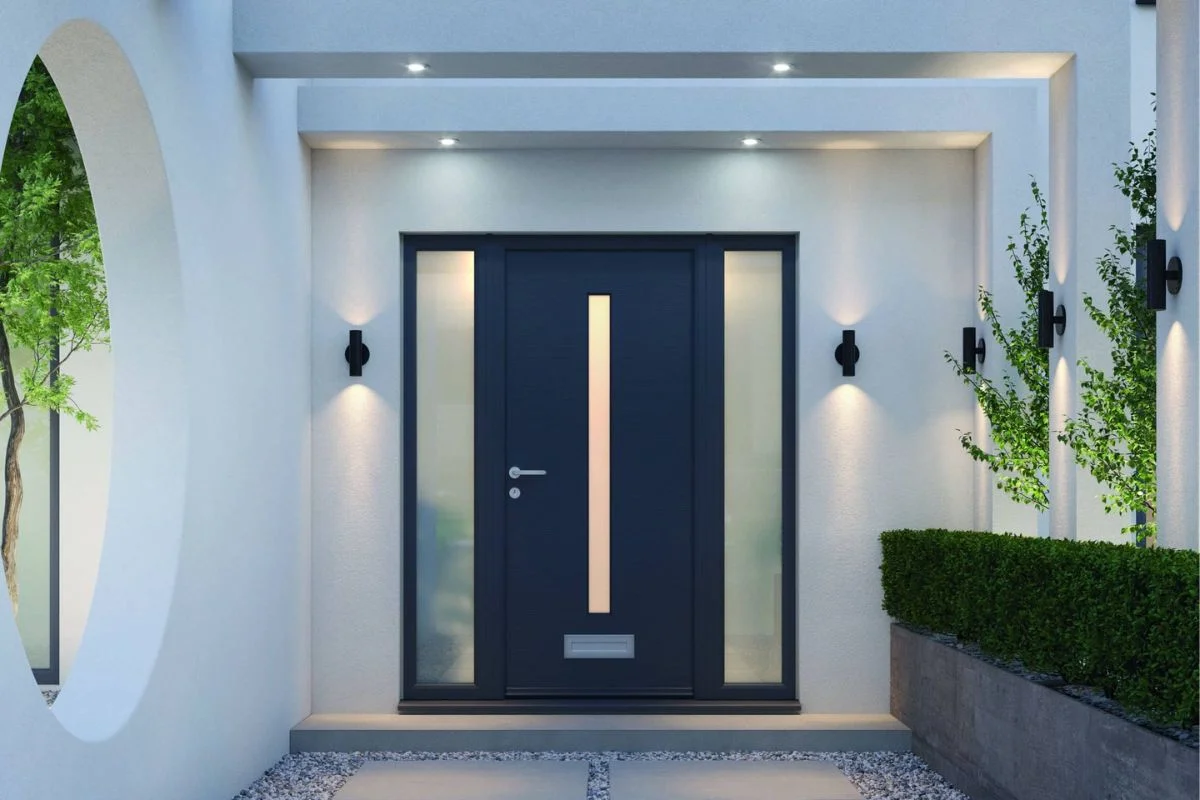
As we move further into the 21st century, the world of architecture and design continues to evolve, embracing new technologies, materials, and aesthetics. One area that has seen significant innovation is modern door design. From residential homes to commercial spaces, modern doors play a crucial role in defining the style, functionality, and security of buildings.
In this article, we will explore the future trends in modern door design and innovation, highlighting the cutting-edge concepts, technologies, and design principles that are shaping the doors of tomorrow. From smart features to sustainable materials, the future of modern doors promises to revolutionize the way we think about entrances, interiors, and architectural design as a whole. Let’s delve into the exciting world of modern door design and discover what the future holds.
Brief overview of the importance of doors in architecture and interior design.
Doors hold significant importance in both architecture and interior design, serving as functional elements that define spaces and contribute to the overall aesthetics and functionality of a building. Here’s a brief overview of their importance:
Functional Access: Doors provide access points between different areas within a building, allowing for movement and circulation of people, light, and air. They help delineate private and public spaces, ensuring privacy and security when needed.
Architectural Character: Doors play a crucial role in defining the architectural character of a structure. They can be grand and imposing, reflecting the style and era of the building, or they can be sleek and minimalist, blending seamlessly with modern design aesthetics.
Interior Design Statement: In interior design, doors contribute to the overall ambiance and style of a space. They can act as focal points, adding visual interest and enhancing the design scheme with their material, color, and texture.
Enhanced Functionality: Modern doors are designed not only for aesthetics but also for functionality. They come equipped with features such as soundproofing, insulation, and security measures, enhancing the comfort and safety of occupants.
Natural Light and Ventilation: Doors with glass panels or transoms allow natural light to filter into interior spaces, creating a sense of openness and connection with the outdoors. They also facilitate ventilation, improving air circulation and indoor air quality.
Space Optimization: In compact living spaces, the choice of door type and configuration can significantly impact space utilization. Sliding doors, pocket doors, and bi-fold doors are popular options for maximizing floor space and creating versatile living areas.
Benefits of Modern Doors
Modern doors offer a range of benefits that cater to both practical needs and aesthetic preferences. Here are some key advantages of modern doors:
Sleek Design: Modern doors often feature sleek and minimalist designs characterized by clean lines and geometric shapes. This contemporary aesthetic adds a touch of sophistication to any space and complements modern interior and exterior design schemes.
Enhanced Security: Many modern doors are equipped with advanced locking mechanisms and security features that provide increased protection against unauthorized entry. This gives homeowners peace of mind knowing that their property is secure and their loved ones are safe.
Improved Energy Efficiency: Modern doors are designed to be more energy-efficient, helping to reduce heat loss or gain and improve indoor comfort levels. Insulated materials and weatherstripping prevent drafts and air leakage, resulting in lower energy bills and a more sustainable living environment.
Noise Reduction: High-quality modern doors are often equipped with soundproofing materials that help reduce noise transmission between rooms or from the exterior environment. This creates a quieter and more peaceful indoor environment, making it easier to relax and focus.
Durability and Longevity: Modern doors are typically constructed from durable materials such as steel, fiberglass, or composite materials that resist warping, rotting, and corrosion. This ensures that the doors maintain their integrity and functionality over time, reducing the need for frequent replacements or repairs.
Customization Options: Modern doors come in a variety of styles, finishes, and configurations, allowing homeowners to personalize their doors to match their unique tastes and preferences. From different panel designs to custom hardware options, there are endless possibilities for creating a truly customized look.
Ease of Maintenance: Modern doors are designed to be low-maintenance and easy to clean, requiring minimal upkeep to keep them looking their best. Most can be cleaned with a simple wipe-down using mild soap and water, making them ideal for busy lifestyles.
Versatility: Modern doors are versatile and can be used in a variety of applications, including interior and exterior doors, entryways, patio doors, and garage doors. They can also be adapted to fit different architectural styles and design aesthetics, making them suitable for both residential and commercial properties.
Types of Modern Doors
Modern doors come in various types, each offering unique features and design elements that cater to different architectural styles and functional requirements. Here are some common types of modern doors:
Flush Doors: Flush doors feature a smooth, flat surface without any raised panels or molding. They offer a minimalist and contemporary look that complements modern interior design styles.
Panel Doors: Panel doors are characterized by raised or recessed panels on the surface, adding texture and visual interest to the door design. Modern panel doors often feature clean lines and geometric patterns for a sleek and stylish appearance.
Sliding Doors: Sliding doors are a popular choice for modern homes and spaces with limited floor space. They operate on a track system and slide horizontally to open and close, providing seamless access between indoor and outdoor areas.
Bi-fold Doors: Bi-fold doors consist of multiple panels that fold in half to open and close, creating a wide opening that maximizes natural light and ventilation. They are commonly used for closets, laundry rooms, and pantry doors in modern homes.
Pivot Doors: Pivot doors rotate on a central pivot hinge rather than swinging on traditional side hinges. They offer a dramatic and contemporary entrance solution and are often used as front doors or grand entranceways in modern architectural designs.
French Doors: French doors feature multiple glass panels separated by wooden or metal frames. They add elegance and charm to any space and are commonly used for interior and exterior access points, such as patio doors or room dividers.
Pocket Doors: Pocket doors slide into a concealed pocket within the wall when opened, saving valuable floor space and creating a seamless transition between rooms. They are ideal for small rooms or areas where swing space is limited.
Glass Doors: Glass doors maximize natural light and create a sense of openness and transparency in interior spaces. They are available in various styles, including clear, frosted, or tinted glass, and can be used for interior partitions, office enclosures, or entryways.
Folding Doors: Folding doors consist of multiple panels that fold accordion-style to one side when opened. They provide flexible space solutions and are commonly used for large openings, such as patio doors or room dividers in modern homes.
Louvered Doors: Louvered doors feature slatted panels that allow for airflow while maintaining privacy. They are often used for closets, utility rooms, or as room dividers in modern interior design.
Design Trends in Modern Doors
Design trends in modern doors are constantly evolving, reflecting changes in architectural styles, technological advancements, and shifts in consumer preferences. Here are some prominent design trends in modern doors:
Minimalist Designs: Clean lines, sleek surfaces, and minimalist detailing characterize modern door designs. Minimalist doors emphasize simplicity and functionality, contributing to a contemporary and uncluttered aesthetic in interior and exterior spaces.
Natural Materials: There is a growing preference for doors crafted from natural materials such as wood, which adds warmth, texture, and character to modern interiors. Sustainable and eco-friendly materials are also gaining popularity, aligning with the increasing focus on environmental consciousness.
Glass Elements: Glass doors and panels are widely used in modern door design to create a sense of openness, transparency, and connectivity between indoor and outdoor spaces. Frosted, textured, or tinted glass adds privacy while allowing natural light to filter through, enhancing the overall ambiance of a room.
Bold Colors and Finishes: Modern doors are increasingly being adorned with bold colors, metallic finishes, and matte textures to make a statement and add visual interest to interior and exterior spaces. Vibrant hues such as deep blues, emerald greens, and rich blacks are popular choices for making a striking impression.
Smart Technology Integration: With the rise of smart homes, modern doors are incorporating advanced technologies such as keyless entry systems, remote locking mechanisms, and integrated sensors for enhanced security, convenience, and accessibility. These features offer homeowners greater control and peace of mind over their living spaces.
Customization Options: Modern doors offer a wide range of customization options, allowing homeowners to personalize their doors to suit their unique tastes and preferences. From custom hardware and finishes to bespoke panel designs and glass inserts, customization allows for endless possibilities in door design.
Seamless Transitions: Modern door designs often prioritize seamless transitions between indoor and outdoor spaces, blurring the boundaries between the two. Large sliding glass doors, pivot doors, and folding door systems create fluid connections and facilitate a smooth flow of movement between interior and exterior living areas.
Energy Efficiency: Energy-efficient door designs featuring insulated materials, weatherproof seals, and thermal breaks are becoming increasingly popular as homeowners seek to reduce energy consumption and lower utility costs. These doors help maintain comfortable indoor temperatures year-round while minimizing heat loss or gain.
Geometric Patterns and Textures: Geometric patterns, asymmetrical designs, and textured surfaces add depth and visual intrigue to modern door designs. These elements create dynamic focal points and elevate the overall design aesthetic, making a bold statement in contemporary interiors.
Sustainable Design Practices: Sustainable design principles are shaping modern door manufacturing processes, with an emphasis on eco-friendly materials, renewable resources, and energy-efficient production methods. Sustainable doors contribute to healthier indoor environments and reduce the environmental impact of construction and renovation projects.
Maintaining Modern Doors
Maintaining modern doors is essential for preserving their functionality, appearance, and longevity. Here are some tips for effectively maintaining modern doors:
Regular Cleaning: Dust and debris can accumulate on door surfaces over time, affecting their appearance. Clean modern doors regularly using a soft cloth or sponge and a mild detergent solution. Avoid abrasive cleaners or harsh chemicals that may damage the door finish.
Inspect and Repair: Periodically inspect modern doors for signs of wear and damage, such as cracks, dents, or scratches. Repair any minor damage promptly to prevent further deterioration. Replace damaged hardware, such as hinges, handles, or locks, as needed to ensure smooth operation.
Lubricate Moving Parts: Lubricate door hinges, tracks, and other moving parts regularly to maintain smooth operation and prevent squeaking or sticking. Use a silicone-based lubricant or graphite powder to lubricate hinges and tracks, avoiding oil-based products that may attract dust and debris.
Adjust Alignment: Check the alignment of modern doors periodically to ensure they close properly and form a tight seal. If a door is sticking or rubbing against the frame, adjust the hinges or tracks to improve alignment. This will prevent air leaks and ensure optimal energy efficiency.
Weatherstripping Replacement: Replace worn or damaged weatherstripping around the perimeter of exterior doors to prevent drafts, air leaks, and moisture infiltration. Weatherstripping helps maintain indoor comfort levels and reduces energy consumption by sealing gaps and cracks around the door frame.
Protect Against Moisture: Modern doors, especially those made of wood or metal, are susceptible to moisture damage if exposed to excessive humidity or moisture. Protect exterior doors with a durable finish or sealant to repel moisture and prevent warping, rotting, or corrosion.
Avoid Slamming: Avoid slamming modern doors, as this can damage the door frame, hinges, and hardware over time. Encourage gentle handling and closing of doors to prevent unnecessary wear and tear.
Regular Painting or Refinishing: If modern doors are painted or finished, monitor the condition of the paint or finish and touch up any areas that show signs of wear or fading. Regular painting or refinishing helps protect the door surface from environmental damage and maintains its appearance.
Monitor for Pest Infestation: Inspect modern doors for signs of pest infestation, such as termites or ants, especially in wooden doors. Take preventive measures to address any pest issues promptly and protect the integrity of the door materials.
Conclusion
In conclusion, modern doors play a pivotal role in the functionality, security, and aesthetic appeal of residential and commercial spaces alike. With their sleek designs, innovative features, and versatile applications, modern doors offer homeowners and designers a myriad of options to enhance the ambiance and functionality of interior and exterior environments.


